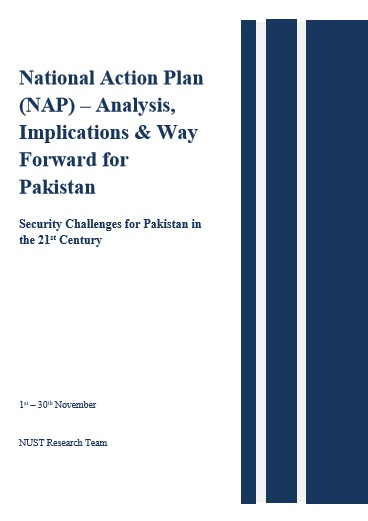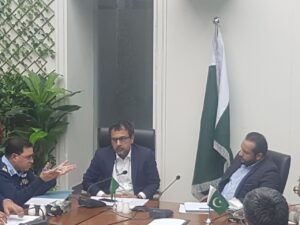As a response to the Peshawar attack of 16th December 2014, the government of Pakistan formulated a nationwide counter-terrorism strategy in the form of the National Action Plan. The NAP was a multidimensional attempt to counter terrorism, in order to eradicate it completely.
This study is an analysis of the National Action Plan that identifies the initial context within which it was formulated against the actual deliverables it has achieved, as it nears the end of its first year of implementation. A systematic study of the policy itself, its aims and objectives and the enabling framework that it requires to achieve these goals reveal that despite its merits, the Plan has a long way yet to go. This study identifies four main factors that act as setbacks to the Plan’s progress and is followed by a set of recommendations to improve existing counter-terrorism legislation and infrastructure as well as to enhance any future attempts to eradicate the terrorism problem from within Pakistan.
National Action Plan
The National Action Plan was formulated in December 2014, as a collaborative effort from Pakistan’s leadership to combat terrorism through a coherent, nationwide strategy. The Plan was agreed upon in the All Parties Conference and thereafter entered the implementation stage. Unfortunately, there have been questions raised on the effectiveness of the Plan and the ultimate sustainability of such a policy, even if it was supposed to be successful in the short term.
The last decade has seen the escalation of instability, insecurity and political violence in the country as a result of Pakistan’s role as a “frontline state” in the Global War on Terrorism (Abbasi, 2013). Pakistan Army launched a military operation Zarb-e-Azb on 15th July, 2014 against the Islamist insurgents based in the North Waziristan district of the Federally Administered Tribal Areas (FATA) in the country (Zahid, 2015). Less than six months after, Pakistan was faced with one the deadliest terrorist attacks on its soil. Seven men affiliated with the Tehrik-i-Taliban (TTP), attacked Army Public School in Peshawar and massacred 141 children (BBC News, 2014).
Many security officials and civilians saw the barbaric incident as a backlash by militants targeted by the military operation (Telegraph.co.uk, 2014) which has been widely acclaimed as Pakistan’s successful operation in the War against Terrorism. After much deliberation and a marathon of meetings, the country’s leadership agreed upon the National Action Plan, which is dubbed by Prime Minister Nawaz Sharif as “the defining moment” in Pakistan’s fight against terrorism (Centre for Pakistan and Gulf Studies, 2015). The Plan (Table 1) constitutes a 20 point agenda that spreads counter-terrorism efforts across different dimensions such as finances, ideology, weaponization etc.
for more details please view pdf





